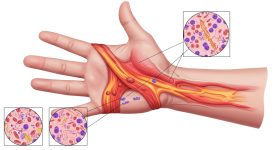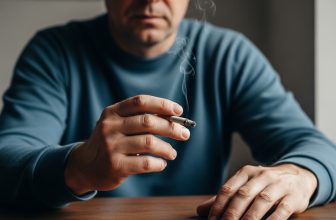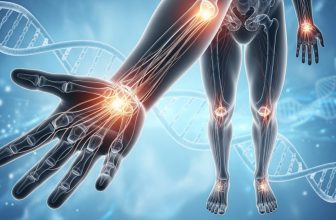
The Role of Inflammation in Dupuytren’s Disease Progression
The Role of Inflammation in Dupuytren’s Disease Progression
Introduction
Why do some people develop Dupuytren’s nodules that never worsen, while others progress quickly to disabling contractures? The answer often lies in inflammation—the body’s response to injury and stress.
How Inflammation Triggers Fibrosis
When the palm’s connective tissue is stressed, the immune system releases cytokines that activate myofibroblasts. These cells produce collagen, the protein that thickens cords. In Dupuytren’s, the process becomes chronic: inflammation doesn’t switch off, leading to ongoing fibrosis.
Risk Factors Linked to Inflammation
- Diabetes
- Smoking and alcohol
- Thyroid dysfunction
- Repetitive hand trauma
- Family history
Each of these increases systemic inflammation, which worsens Dupuytren’s outcomes.
Symptoms and Progression
Inflammation explains why some patients experience tenderness, swelling, and rapid changes in the early stages. Later, cords become hardened scar-like tissue with less visible inflammation.
Treatment Options
- Anti-inflammatory lifestyle: diet, exercise, reduced alcohol.
- Steroid injections: occasionally used in painful nodules.
- Emerging research: biologics that target cytokines may slow progression.
What the Science Says
Studies show elevated inflammatory markers (like TNF-α and TGF-β) in Dupuytren’s tissue. Animal models confirm that reducing these markers slows fibrosis. Clinical trials are ongoing.
What Dupuytren’s Patients Should Know
For patients, this means managing inflammation systemically—through diet, lifestyle, and addressing conditions like diabetes—may slow Dupuytren’s progression. Discuss anti-inflammatory strategies with your doctor in addition to procedural treatments.
Key Takeaways
- Inflammation drives fibrosis in Dupuytren’s.
- Systemic risk factors matter: diabetes, thyroid, alcohol, smoking.
- Research is ongoing into anti-inflammatory drugs.
- Lifestyle plays a role in slowing progression.
- Holistic care matters for long-term outcomes.
Attribution
Attribution (CC BY 2.0): Adapted from Verjee LS, Midwood K, et al. Inflammation in Dupuytren’s Disease. Fibrogenesis Tissue Repair. 2012;5(Suppl 1):S20. Licensed under Creative Commons Attribution 2.0.
For the complete article and reference list, click Source.
Call to Action
Call to Action: Learn more about how lifestyle changes may help manage Dupuytren’s at https://www.dupuytrensolutions.com, and share your experience in our community: https://www.facebook.com/groups/dupuytrensolutionsandhealth.






